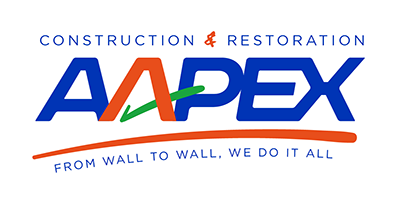It’s easy to under the appeal of a DIY remodeling project. There’s something deeply satisfying about stepping back from a completed project and seeing the rewards of all your hard work – while saving a few bucks in the process. Unfortunately, some home renovation projects are more difficult (and more dangerous) than others. Knowing the dangers of DIY remodeling will help you know when to call in a professional to complete your home’s renovations.
DIY Remodeling & Compliance with Building Codes
 One of the biggest dangers of DIY remodeling is in not adhering to current building codes. Completing any major renovation project often involves securing building permits and passing inspections to ensure all safety building standards are met. These run the gamut and include structural, electrical, plumbing, and HVAC standards that are in place to protect your property and your loved ones from structural failure, electrical fires, and more. Even if you are reasonably confident in your knowledge and abilities to complete these renovations according to current safety standards, you may encounter problems should you decide to sell your home. Many home inspectors will pull building permits for any major renovations done to a home prior to the sale to make sure the home is up to code. In many cases, homeowners will be required to demonstrate compliance, even if it means cutting into finished walls to get to access points for inspection. If your home is not up to code at the point of sale, you may need to complete repairs, rebuild, and even pay fines. This can significantly slow down the process of selling your home and even scare off potential buyers.
One of the biggest dangers of DIY remodeling is in not adhering to current building codes. Completing any major renovation project often involves securing building permits and passing inspections to ensure all safety building standards are met. These run the gamut and include structural, electrical, plumbing, and HVAC standards that are in place to protect your property and your loved ones from structural failure, electrical fires, and more. Even if you are reasonably confident in your knowledge and abilities to complete these renovations according to current safety standards, you may encounter problems should you decide to sell your home. Many home inspectors will pull building permits for any major renovations done to a home prior to the sale to make sure the home is up to code. In many cases, homeowners will be required to demonstrate compliance, even if it means cutting into finished walls to get to access points for inspection. If your home is not up to code at the point of sale, you may need to complete repairs, rebuild, and even pay fines. This can significantly slow down the process of selling your home and even scare off potential buyers.
Safety Hazards of DIY Remodeling
DIY Remodeling presents several safety hazards. For starters, the process itself is full of opportunities to injure yourself or others. Using power tools, climbing to precarious heights, digging around within the electrical wiring of your home – all present extreme, potentially lethal hazards. Licensed contractors have extensive experience and expertise working within these conditions, but even they are insured against accidents that may occur throughout the renovation process.
Lead-based Paint & Asbestos
Older homes present additional hazards when it comes to the type of building materials that may be uncovered during the remodeling process. Any home built before 1978 is likely to contain lead-based paints, which are toxic and poisonous when inhaled. Any renovation that involves disturbing lead-based paint needs to follow safety protocols that will protect you and your loved ones from exposure. This includes using proper personal protection equipment, like respirator masks, goggles, and coveralls, as well as properly mitigating the dust that comes with handling lead-based paint. Similarly, disturbing asbestos, which is still used in building projects even today, can expose you and your loved ones to asbestos fibers that can become lodged in your lungs and airways, causing tissue damage and several serious medical conditions. Being able to recognize building materials that contain asbestos as well as properly mitigating the danger is paramount to protecting your family from exposure.
The Safety Behind Building Codes

Building codes exist to keep people safe. Inspections are completed throughout the renovation process to ensure the building will not fall down, wires will not spontaneously spark a deadly fire, and the HVAC system will not poison your family with carbon monoxide. A mistake made in any of these areas can prove deadly for the ones you love. Perhaps the most significant safety hazard of DIY Remodeling projects is in the possibility of booby-trapping your house by inadvertently missing something a building inspector would have caught.
DIY Remodeling Impact on Home Value
 There are three main reasons people remodel their home, and they all boil down to increasing the home’s value. Whether renovations are being done to increase living space, update the home, or complete repairs after fire or water damage, all home renovations should increase a home’s value and provide a fair return on investment. Some DIY projects are easier to do than others, but when handling major home renovations, poorly completed projects will actually detract from the home’s value. When considering whether you are skilled enough to complete a DIY remodeling project, it’s important to be honest with yourself. Unless you have previous experience doing major renovations or unless the project is simple, it’s a good idea to rely on a licensed contractor to handle your home’s remodeling.
There are three main reasons people remodel their home, and they all boil down to increasing the home’s value. Whether renovations are being done to increase living space, update the home, or complete repairs after fire or water damage, all home renovations should increase a home’s value and provide a fair return on investment. Some DIY projects are easier to do than others, but when handling major home renovations, poorly completed projects will actually detract from the home’s value. When considering whether you are skilled enough to complete a DIY remodeling project, it’s important to be honest with yourself. Unless you have previous experience doing major renovations or unless the project is simple, it’s a good idea to rely on a licensed contractor to handle your home’s remodeling.
Aapex Construction & Restoration has more than 20 years of experience with a team that specializes in commercial and residential renovation projects. We offer exceptional workmanship and stellar customer service. We are licensed, certified, and insured and have the skills, knowledge, and tools to safely remodel your house into your dream home. Contact us today to schedule a consultation.
Relate Articles
Man Cave Madness: The “Must Haves” for Every Remodeled Basement
Minding the Mess: Preparing for a Home Renovation
Handyman v. Contractor: What’s the Difference?


